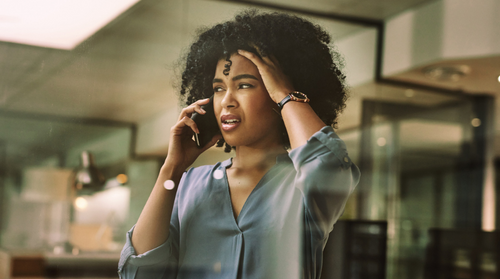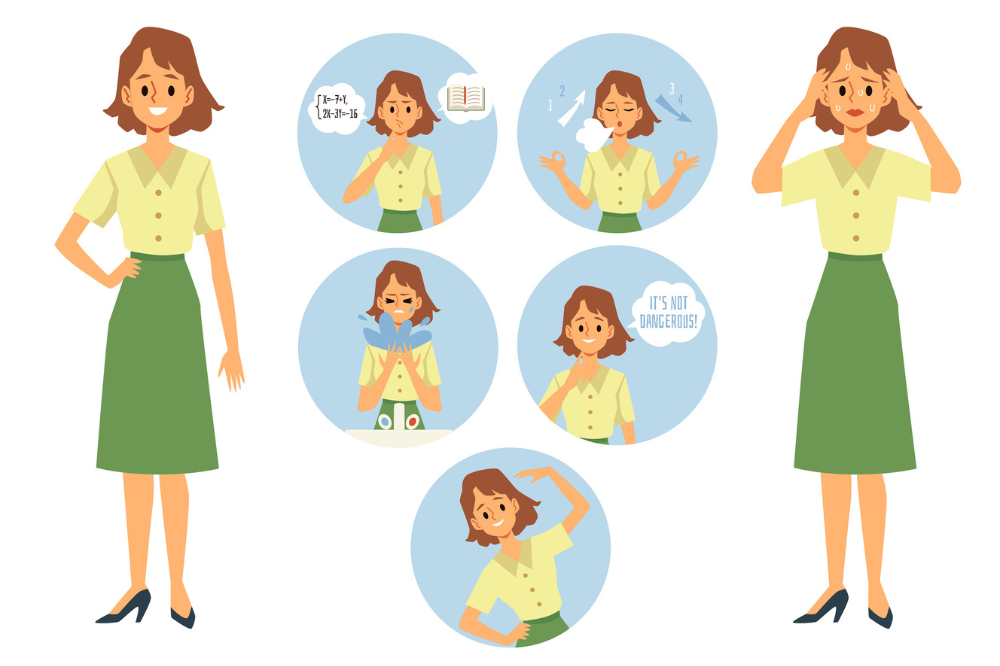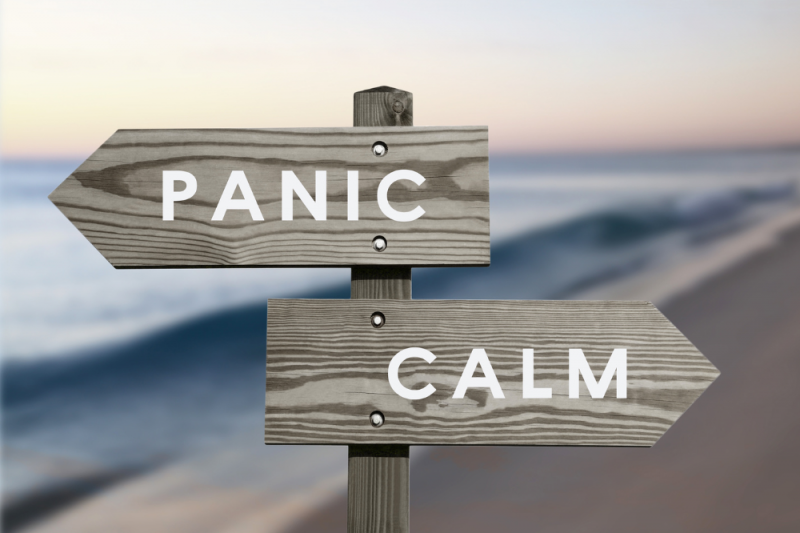
A young business woman on a mobile phone call looks anxious and panicked
Panic attacks are common, can strike without warning, and the symptoms can be frightening, especially if the person doesn’t know what’s happening to them.
‘I thought I was dying,’ is how one person described the feeling of a panic attack. ‘I just felt the most intense fear and anxiety all of a sudden, for no real reason,’ said another. ‘It felt like a heart attack. I felt like I couldn’t breathe,’ said a third.
Panic attacks, also known as anxiety attacks, can happen to anyone. Around 35-40% of people will experience a panic attack at some time in their lives.
They usually last a few minutes to half an hour, and rarely longer than an hour. But the physical and emotional effects may last a few hours.
Symptoms
Along with feeling anxiety and fear, symptoms can include:
- feeling like you’re having a heart attack, a racing heart, or heart palpitations
- feeling short of breath or like you’re choking
- sweating
- feelings of foreboding, dread, or danger
- a fear of losing control, loss of sanity, or dying
- irrational thoughts
- feelings of detachment, disconnection, or unreality
- dizziness
- muscle tension
- trembling or shaking
- tingling in the arms and hands
- hot or cold flushes
- dry mouth
- nausea.
Panic disorders
Most people can experience occasional feelings of panic or anxiety when they are sick, stressed, or injured, but these feelings often resolve with the situation and don’t usually recur.
If the panic attacks happen often, or last a long time, they can have a very debilitating effect on a person’s life. They can become afraid of having them. They may start to avoid situations they think may trigger an attack, such as leaving home, going to crowded places, or being on their own. They may even have a panic attack about having a panic attack.
Recurring and unexpected panic attacks are known as panic disorder, a type of anxiety disorder.
Causes
When the brain perceives danger, the autonomic nervous system orders the body to produce a cascade of chemicals, including cortisol and adrenaline, which prepare the heart, lungs, and muscles for combat or for running away, the so-called fight-or-flight response. This happens very fast.
A panic attack can happen when the body goes into fight-or-flight mode when there is no excessive stress, trigger, or actual danger present.
They can happen when a person is safely in bed asleep, on the couch watching TV, or cooking dinner.
There are some additional factors that can make the body more likely to go into fight-or-flight mode.
- A sudden (acute) stressful event or trauma, such as witnessing an accident, or losing a loved one.
- Ongoing (chronic) stress, such as excessive stress at work for an extended period, can cause elevated stress chemicals.
- Stimulants, medications, alcohol and other drugs—for example, caffeine is a stimulant and some research indicates that too much caffeine can increase anxiety and panic attacks. Stimulants can also affect people’s sleep patterns and sleep deprivation can increase anxiety.
- Diseases such as hyperthyroidism, diabetes and others, or brain injury, can cause physical changes that can trigger panic attacks.
- Cardiac disease, inner ear problems, and asthma can cause panic symptoms.
- A sudden change in physical environment or conditions, or intense physical exercise can trigger some people.
- Hyperventilation, or breathing too much or too deeply for too long, can trigger fight-or-flight by dropping levels of carbon dioxide in the blood too low.

What to do if you’re having a panic attack
- Remind yourself that while the symptoms feel bad, there is no actual threat to your life.
- It’s important to try not to focus on the symptoms, and avoid self-talk that focuses on them, for example, telling yourself to ‘Relax!’ or ‘Don’t panic!’.
- Try put your attention on something that is not a symptom and is outside of your own body. You could try recall a beautiful scene from a movie, a favourite holiday memory, or the words of a song or poem that you love. Some people find doing maths problems in their head counting backwards from a big number—say 100—is a good way to focus your attention elsewhere.
- Don’t seek to escape the place or situation (unless it really is dangerous). Instead, try and put your attention on something else and wait for the symptoms to subside. This can help you gain confidence that you can cope in future.
Treatment
If you’re having panic attacks, see your doctor to ensure they’re not caused by an underlying medical condition, and to help find treatment options. These may include:
- understanding anxiety and panic attacks
- relaxation, stress management, and problem-solving techniques
- lifestyle modifications to diet, exercise, and sleep
- psychotherapy
- medication.
